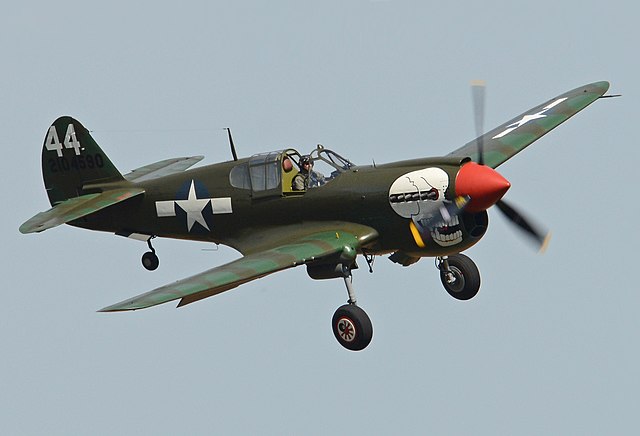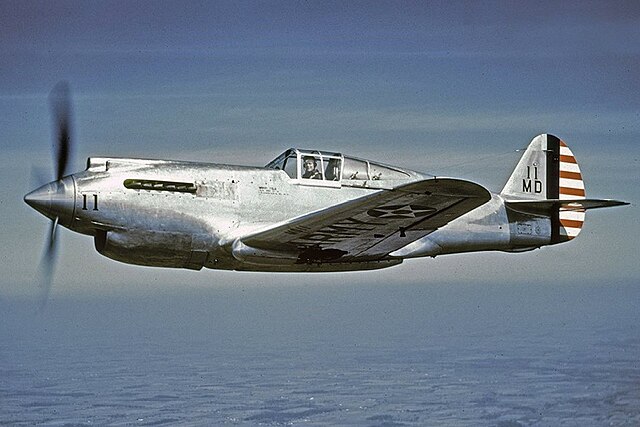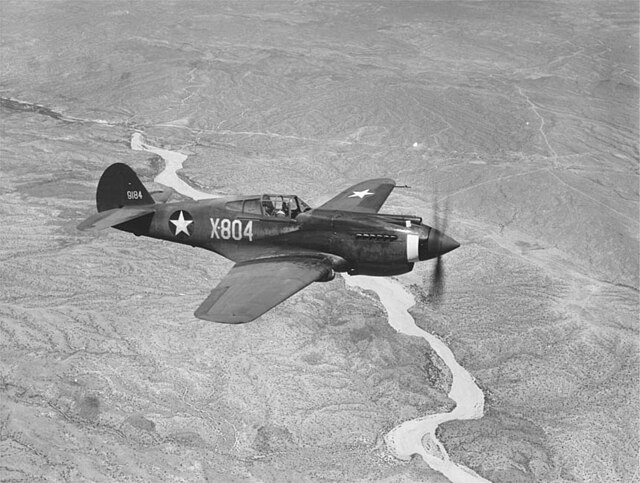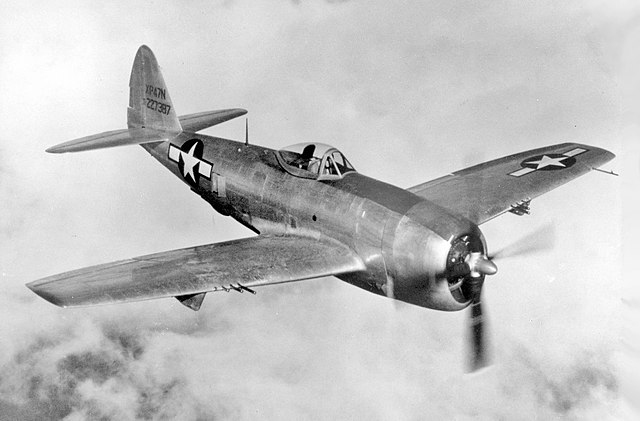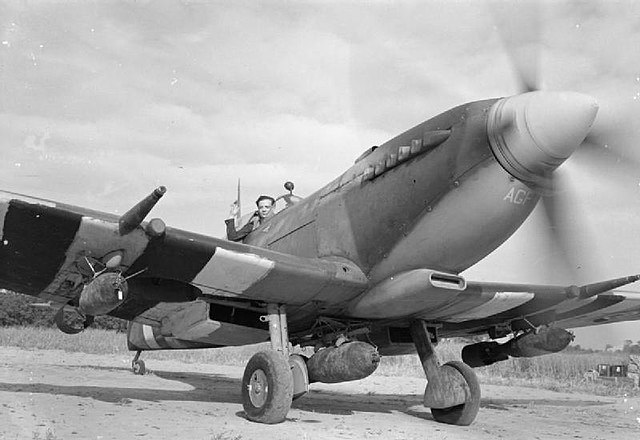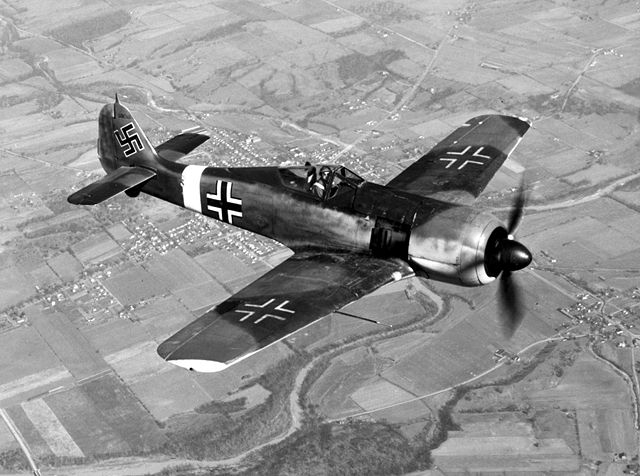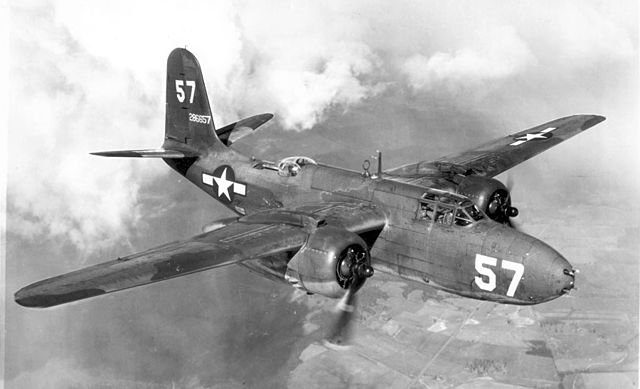The Curtiss P-40 Warhawk is an American single-engined, single-seat, all-metal fighter-bomber that first flew in 1938. The P-40 design was a modification of the previous Curtiss P-36 Hawk which reduced development time and enabled a rapid entry into production and operational service. The Warhawk was used by most Allied powers during World War II, and remained in frontline service until the end of the war. It was the third most-produced American fighter of World War II, after the North American P-51 Mustang and Republic P-47 Thunderbolt; by November 1944, when production of the P-40 ceased, 13,738 had been built, all at Curtiss-Wright Corporation's main production facilities in Buffalo, New York.
Curtiss P-40 Warhawk
Curtiss XP-40 "11" used for test purposes by the Materiel Division of the U.S. Army Air Corps
A three-quarter view of a P-40B, X-804 (s/n 39-184) in flight. This aircraft served with an advanced training unit at Luke Field, Arizona.
Evidence of the P-40's durability: in 1944 F/O T. R. Jacklin (pictured) flew this No. 75 Squadron RAAF P-40N-5 more than 200 mi (322 km) after the loss of the port aileron and 25% of its wing area, due to a mid-air collision with another P-40N-5.
A fighter-bomber is a fighter aircraft that has been modified, or used primarily, as a light bomber or attack aircraft. It differs from bomber and attack aircraft primarily in its origins, as a fighter that has been adapted into other roles, whereas bombers and attack aircraft are developed specifically for bombing and attack roles.
The Republic P-47D was armed with eight .50-caliber (12.7 mm) machine guns, and could carry a bomb load of 2,500 lb (1,100 kg).
A Supermarine Spitfire Mk. IX in Longues-sur-Mer, Normandy (1944). It carries a 500 lb (230 kg) bomb under the fuselage and a 250 lb (110 kg) bomb under each wing.
The F-series models of the Focke-Wulf Fw 190 were specifically adapted for the fighter-bomber role.
The Douglas A-20 Havoc

